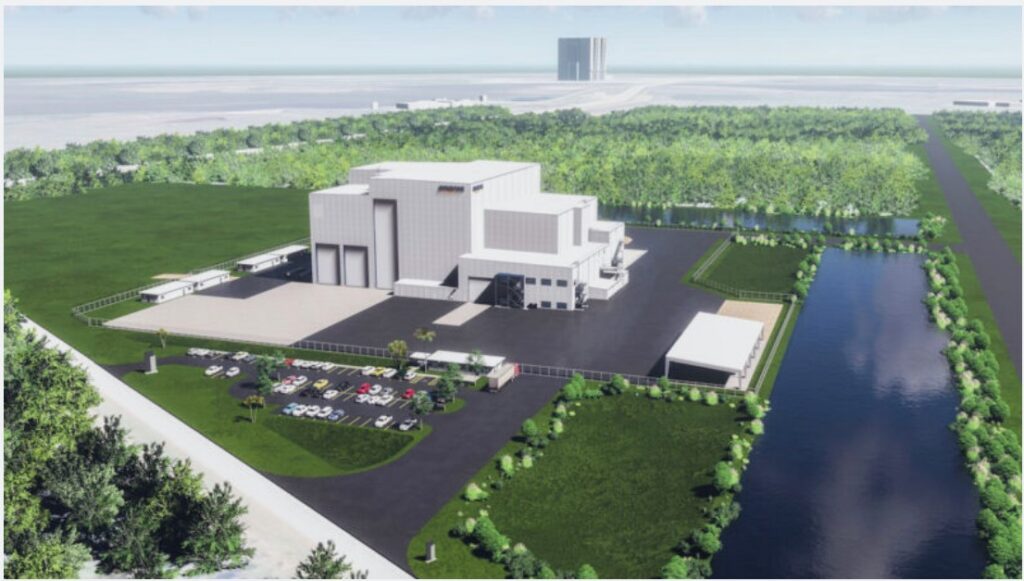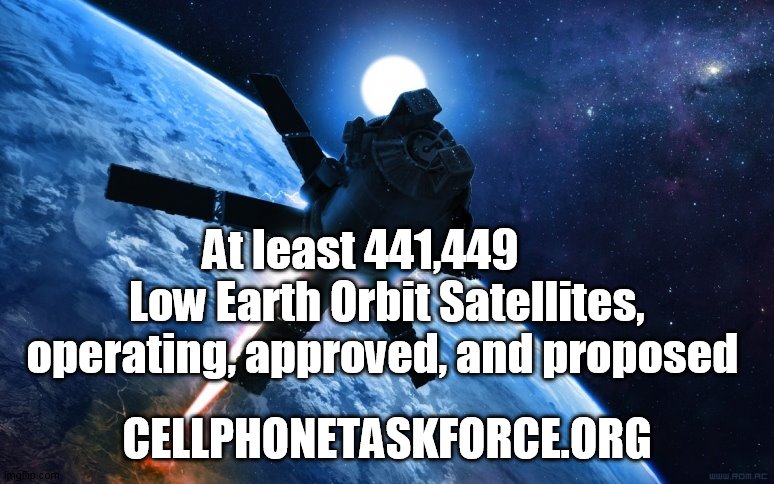 By B.N. Frank
By B.N. Frank
High-speed broadband connections can be achieved via safer and more secure methods than biologically and environmentally harmful wireless-radiation emitting satellites. Of course, launching them is NOT eco-friendly either. They also contribute to already dangerous levels of space junk and they are making it more difficult for astronomers to conduct research (see 1, 2). In regard to Starlink satellites, there have already been so many problems reported about them. The ones that haven’t fallen from orbit and burned yet are swerving every 10 minutes to avoid collision. Last year it was reported that their speed is also slowing down everywhere! Nevertheless, the “captured” Federal Communications Commissions (FCC) continues to approve the launching of tens of thousands of broadband satellites from SpaceX as well as other companies including Amazon.
From Ars Technica:
Amazon is getting ready to launch a lot of broadband satellites
Amazon unveils satellite facility in Florida, may switch prototype launch to Atlas V

Enlarge / Artist’s illustration of Amazon’s Kuiper satellite processing facility at NASA’s Kennedy Space Center.
Within a few years, Amazon hopes to be building and launching up to 80 satellites per month to populate the company’s Kuiper constellation, a $10 billion network that is similar to fleets already operated by SpaceX and OneWeb providing Internet connectivity around the world.
In the next six months, Amazon plans to begin production of operational Kuiper satellites at a new 172,000-square-foot factory in Kirkland, Washington. On Friday, officials from Amazon and the Florida government announced that a 100,000-square-foot facility under construction at NASA’s Kennedy Space Center will serve as a satellite processing facility dedicated to the Kuiper program.
Inside this facility near the old space shuttle landing strip, engineers will mount Kuiper satellites onto huge orbital deployer mechanisms standing several stories tall, then encapsulate the structure inside the nose cones of their rockets. The fully integrated payload compartments will then move out to launch pads operated by United Launch Alliance and Blue Origin—the space company established by Amazon founder Jeff Bezos—at Cape Canaveral Space Force Station, a few miles away.
The new structure is being built on land leased by NASA to Space Florida, a state-funded economic development agency focused on luring commercial space companies to the Sunshine State. It has a high bay that will stand about 100 feet (30 meters) tall, big enough to house the payload fairings of ULA and Blue Origin’s heavy-lift rockets. Amazon says it is investing about $120 million in the new facility, which is sized to accommodate up to three simultaneous launch campaigns.
“One of the places that makes this facility so unique and such a great place to do business is the proximity to the launch providers and to the launch sites,” said Brian Huseman, Amazon’s vice president of public policy.
Amazon’s Project Kuiper is one of several large “mega-constellations” either already in space or nearing launch. It’s a competitor to SpaceX’s Starlink network, which already has more than 4,000 satellites in orbit, and OneWeb’s broadband constellation, numbering more than 600 spacecraft.
If you track this industry, you’ll know that SpaceX is regularly launching its Starlink satellites in large batches aboard the company’s own Falcon 9 rocket. These flights from Cape Canaveral and from Vandenberg Space Force Base, California, make up about half of SpaceX’s missions over the last couple of years, with Starlink launches flying about once per week, on average.
Amazon’s projected launch rate is almost as ambitious. The company aims to deploy about half of its 3,236 satellites by July 2026, a deadline to maintain network authorization from the Federal Communications Commission. That would require at least two launches per month, and perhaps more, from Amazon’s stable of launch service providers.
The expected launch cadence requires a dedicated building to prepare the satellites for launch, Amazon officials said.
Last year, Amazon signed the largest commercial launch contract in history, snatching up rides on ULA’s new Vulcan rocket, Blue Origin’s New Glenn, and Arianespace’s Ariane 6 launcher. All told, Amazon has purchased 77 launches: 38 Vulcan launches, plus nine flights on ULA’s soon-to-retire Atlas V, 18 Ariane 6 rockets, and 12 New Glenn missions, with a contract option for 15 more.
That will cover Kuiper’s launch service needs for its 3,200 satellites. But all those rockets, except for the Atlas V, are still in development. ULA’s Vulcan appears like it will fly first of Amazon’s crop of launch vehicles, probably followed by the European-built Ariane 6, and then Blue Origin’s New Glenn.
SpaceX was not part of the launch contracts, and that wasn’t a surprise since Amazon’s Kuiper network will compete with Starlink. But OneWeb, another satellite broadband provider, inked a deal with SpaceX last year to launch its satellites on Falcon 9 rockets after launches on Russian rockets fell through in the wake of Russia’s invasion of Ukraine.
Tired of waiting?
Continue reading at ArsTechnica
Activist Post reports regularly about broadband, space vehicles, and unsafe technologies. For more information, visit our archives.
Become a Patron!
Or support us at SubscribeStar
Donate cryptocurrency HERE
Subscribe to Activist Post for truth, peace, and freedom news. Follow us on SoMee, Telegram, HIVE, Flote, Minds, MeWe, Twitter, Gab, and What Really Happened.
Provide, Protect and Profit from what’s coming! Get a free issue of Counter Markets today.


Be the first to comment on "Amazon Also Plans to Build and Launch Thousands of Controversial FCC-Approved Broadband Satellites"